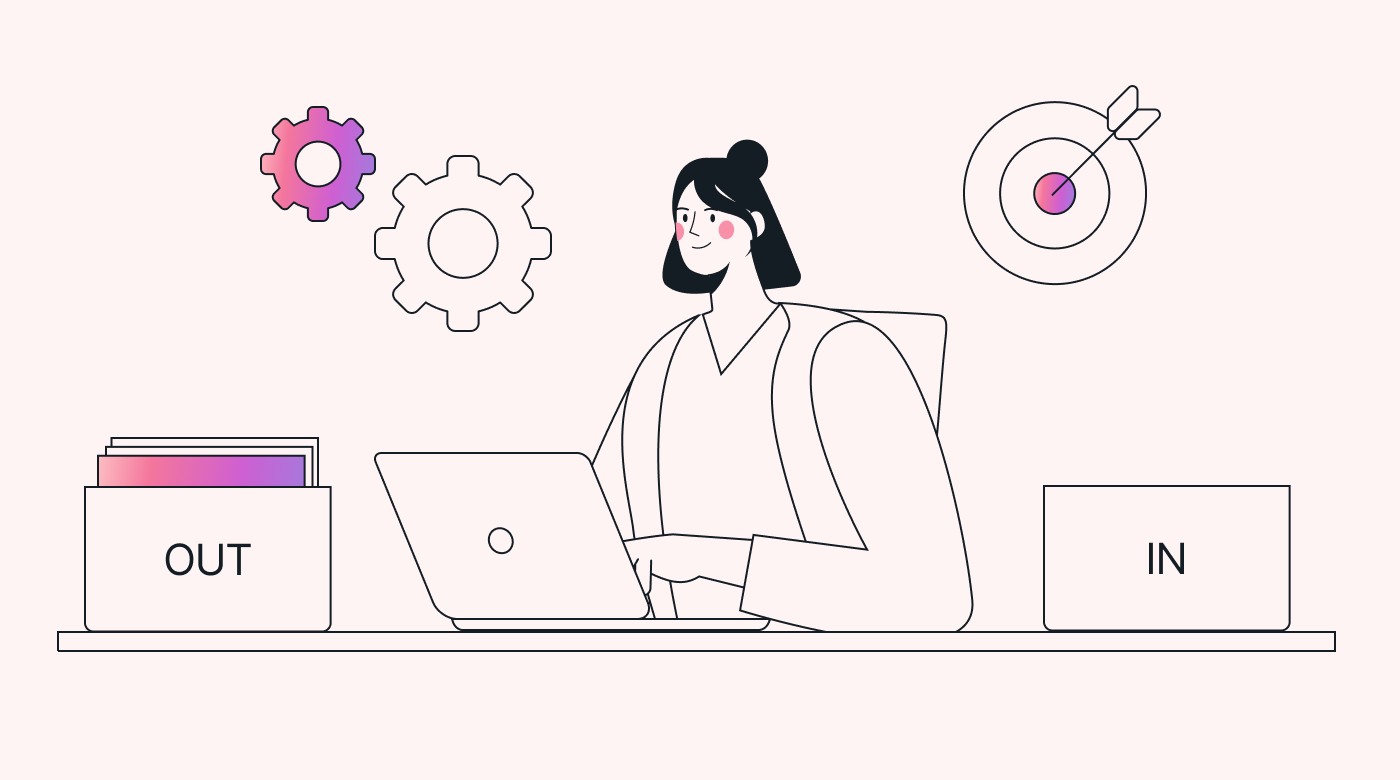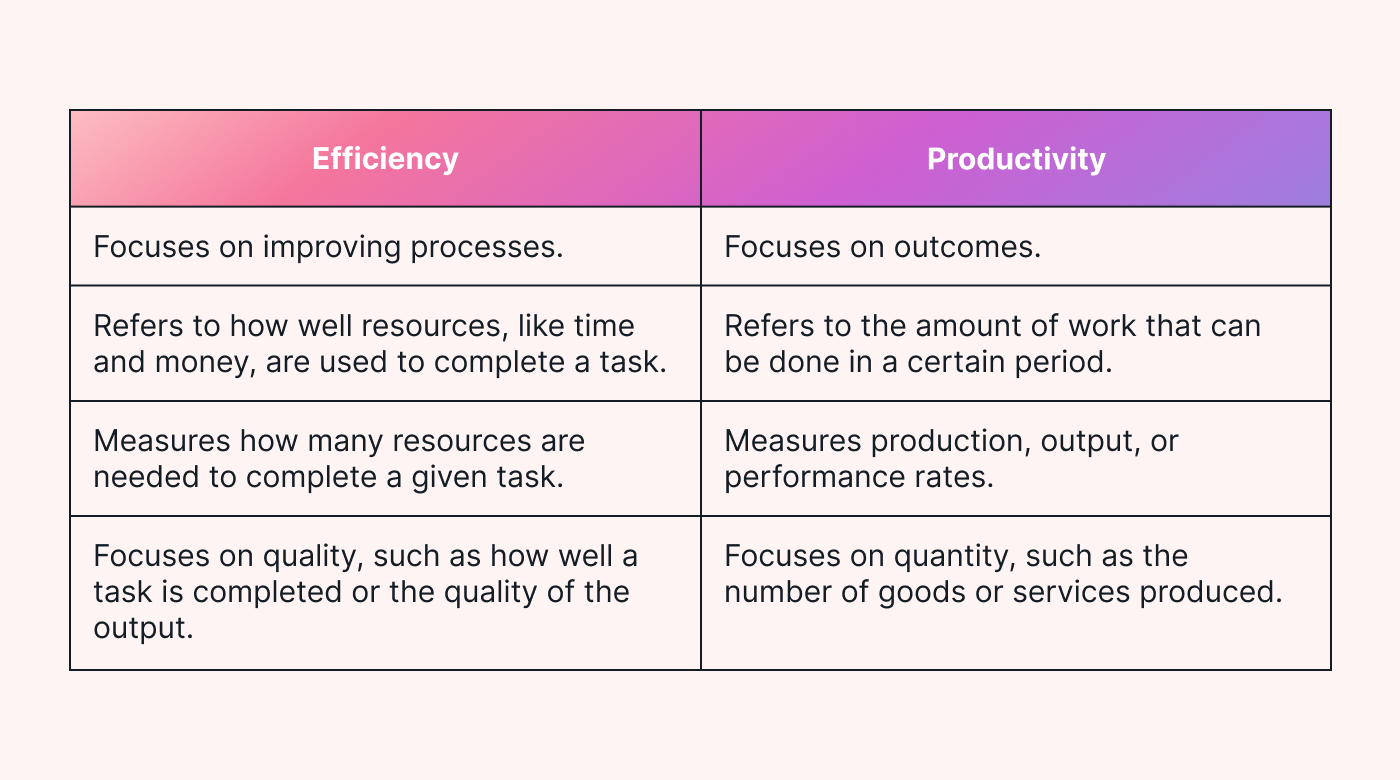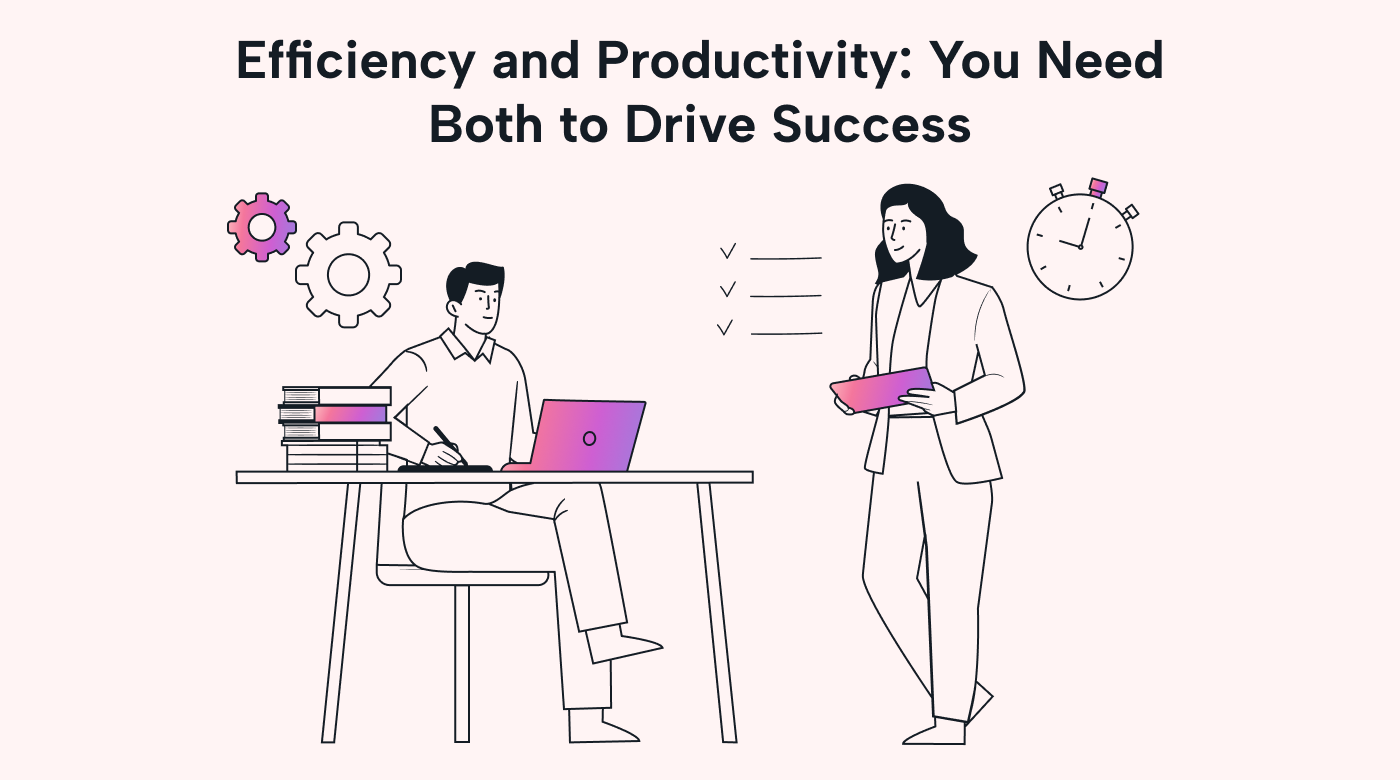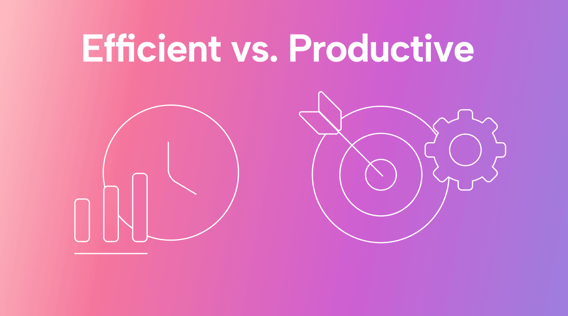The words “efficiency” and “productivity” are often used interchangeably. Both concepts are a must for success at work. However, they’re not the same thing.
Understanding the differences between the two can reveal the secret to achieving optimal performance at work.
In this article, we delve into the nuances of being efficient vs. productive and explore why this difference matters in the workplace.
Cracking the code to strike the right balance between the two can help you unlock your business’s full potential and drive success in today’s increasingly competitive world.
Defining efficiency: What is efficiency at work?
Efficiency at work means getting the most output from the least possible input. This translates to:
- Squeezing the most value out of the available resources
- Minimizing waste
- Optimizing your processes
Efficiency streamlines task accomplishment and goal achievement. Essentially, it sees employees working smarter — not harder.
The importance of efficiency in the workplace
Efficiency at work is more than just a buzzword — it’s a money and time saver, as it minimizes waste and bolsters profits.
To get the outcome you want with the lowest amount of effort and fewest resources, you must learn how to manage your time, energy, and resources.
Want to ramp up efficiency for your business? Then you’ll also want to consider providing consistent training and development, refining current products and processes, automating repetitive tasks, and consistently innovating and trying new ways to work smarter.
 |
Once your team’s efficiency improves, you’ll likely notice that their productivity also increases.
Remember, efficiency and productivity, while related, aren’t the same. Let’s now jump into discussing productivity.
Understanding productivity: What is productivity in the workplace?
Productivity in the workplace looks at how much work gets done. It’s based on quantity of output.
Where efficiency is concerned with how well an available resource is used, productivity focuses on how many items are produced using the same resource.
The more productive we become, the more we can achieve with limited time and resources.
However, it’s crucial to avoid mistaking busyness for productivity. Productivity isn’t just about constant hustle — it’s about making strides toward meaningful outcomes. Busy work isn’t always important work and doesn’t guarantee real results.
The importance of productivity
Productivity can be a real game-changer in the workplace.
When teams are firing on all cylinders, they deliver sterling work, consistently hit their goals, and naturally produce more. They also use limited resources more efficiently, giving their company a leg up in today’s competitive marketplace.
Because productivity drives businesses forward, investing in it is a must.
 |
If you want to drive your team to greater productivity, you’ll want to keep them as engaged and invested as possible. There’s a solid connection between engagement and productivity, with engaged employees outperforming their peers by a whopping 21%.
In other words, workers who are deeply committed to their roles are driven to hit their targets, boosting productivity across the board. Conversely, a lack of engagement reduces productivity levels.
Productivity vs efficiency: what’s the difference?
Here are some of the key differences between productivity and efficiency:
 |
If you want to increase your productivity and efficiency, then Motion can help! With automation and AI, we’ll help you plan your day, schedule meetings, and build the perfect to-do list.
What’s more important: efficiency or productivity?
Both efficiency and productivity are critical for a thriving workplace.
So what happens when we place too much emphasis on one and not enough on the other?
- Prioritizing efficiency can lead to skimping on the time, effort, or resources needed for a task — potentially impacting the quality of the output.
- On the other hand, productivity without efficiency might mean driving employees to churn out more work, which can lead to burnout, errors, and a drop in morale.
 |
The reality is that many teams struggle to be productive or efficient.
The average office worker is only productive for about two 2 hours and 23 minutes per 8-hour workday. That leaves more than five hours of unproductive time. This is also an astonishing waste of resources — and an issue that must be addressed if you want to be successful.
But if you can support both, your employees will be able to get work done without burning out.
Neither efficiency nor productivity is “better” than the other. Both are critical cogs in the workplace machine, which means tipping the balance too far in favor of one can have negative implications for the other.
Check out the next section for strategies on how to balance efficiency and productivity.
10 strategies for balancing efficiency and productivity in the workplace
Striking the right balance between productivity and efficiency doesn’t mean working more. It means working smarter. Here are 10 strategies for doing this in your workplace:
1. Establish clear goals
A clear roadmap outlining your journey toward your goals can boost both productivity and efficiency. Define your goals explicitly, break them down into manageable tasks, and track your progress.
This approach will help eliminate guesswork, enabling you to focus on the tasks that directly contribute to your objectives.
2. Prioritize your tasks
Efficient work often comes from knowing what needs your attention first. Start each day by identifying the tasks on your plate and prioritizing them so your focus and energy are directed at those that truly matter.
Prioritizing tasks has a knock-on effect on productivity because when you know what you need to do, you won’t waste time figuring out what to do next. You’ll also be less likely to procrastinate.
3. Master the art of delegation
Delegating isn’t about unloading tasks — it’s about smartly distributing work to maximize overall efficiency.
Allocate tasks to the right people so you can focus on those that need your skills and attention.
4. Keep your employees engaged
A company’s productivity is tied to its employees’ engagement. Creating a stimulating work environment that keeps employees invested helps managers boost both productivity and efficiency within the company.
5. Take regular breaks
Your brain needs to recharge to work optimally. Take a walk, meditate, or change up your workspace. All these activities can rejuvenate your focus and creativity.
 |
6. Clarify roles and responsibilities
Clarity is key to efficiency and productivity. Ensure every team member understands their roles and responsibilities. Clear delineation of tasks reduces confusion, streamlines workflow, and helps avoid duplication of effort.
7. Encourage feedback
Creating a culture in which regular, constructive feedback is encouraged can be a catalyst for improvement. Feedback is a two-way process that helps employees refine their work processes, leading to enhanced productivity and efficiency over time.
8. Limit interruptions
A quiet, distraction-free workspace can do wonders for focus. Identify and mitigate interruptions wherever possible. Turn off your social media notifications. Put your phone on “Do Not Disturb” mode. Schedule a block of time in which to check your emails.
9. Avoid multitasking
Contrary to popular belief, multitasking can reduce both efficiency and productivity. Focusing on one task at a time ensures that you give your best to each job — ultimately leading to higher-quality output.
10. Leverage productivity apps
From task trackers to time management apps, there’s a wealth of digital assistance at your fingertips to help you stay organized, effectively manage your time, and maintain your focus. Motion, for instance, can increase your productivity by a whopping 137% and save you two hours per day.
Balance efficiency and productivity with Motion
As a small business owner, you might be wondering, “How can I make my team work smarter, not harder?”
The secret to navigating efficiency and productivity lies in understanding their nuances. While efficiency is all about getting the most out of your resources, productivity focuses on meaningful results and achieving those all-important goals.
Ready to supercharge your team’s performance? An easy way to start is by giving your team access to efficiency and productivity tools that can streamline their workflow.
So why not try Motion? It’s an all-in-one productivity tool that can prioritize your tasks by their importance, reschedule incomplete tasks, ensure your team meets their deadlines, and a lot more. It’s free for seven days, so sign up now!





